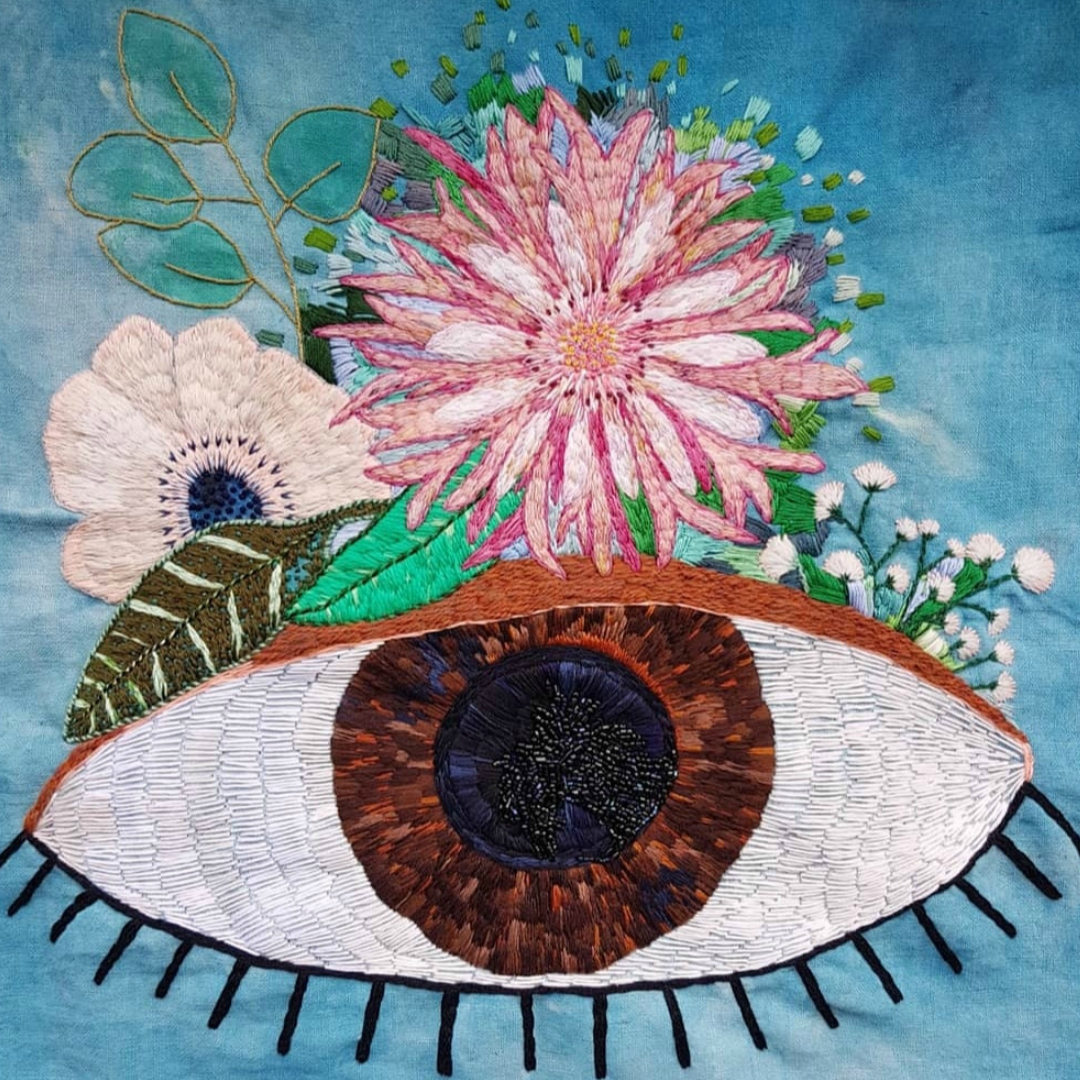
Artist takes a multidisciplinary approach to her . Combining elements of stitching and painting, her images have an ethereal quality that celebrates nature—in many ways. The impressive pieces are simultaneously figurative and abstract; they let the two interact worlds with one another in an easy, almost conversational way.
So, how does she do it? I had the opportunity to speak with Fleur about the inspiration behind her work, favorite materials, and much more. Scroll down to read my interview with her. Afterward, be sure to check out her Etsy shop and follow her on .
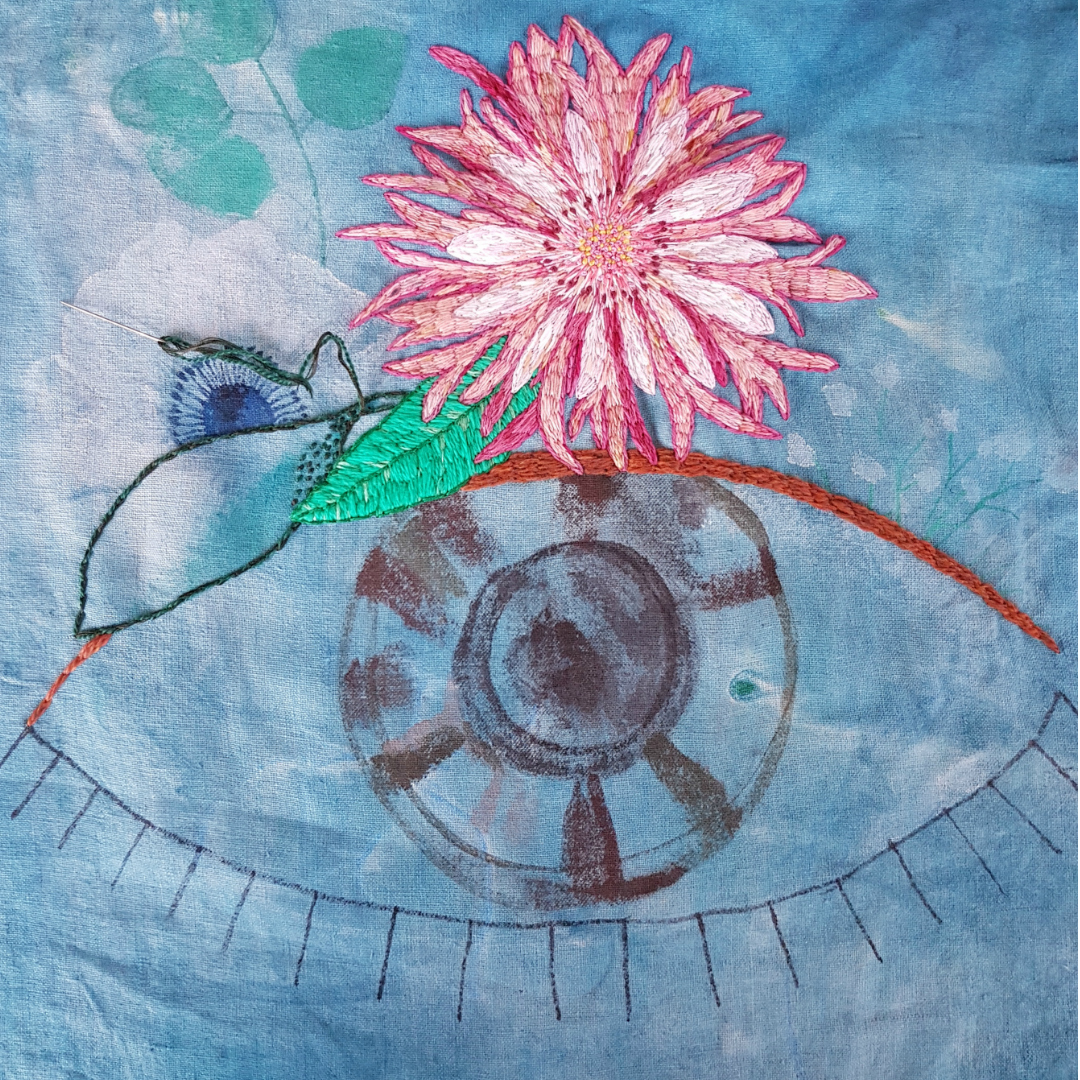
How would you describe what your work is?
I like to describe my work as contemporary stitched paintings inspired by flora. As a mostly self taught artist, I came to stitch organically via mixed media and so still consider myself a painter, my mark making just involves a lot of stitch.
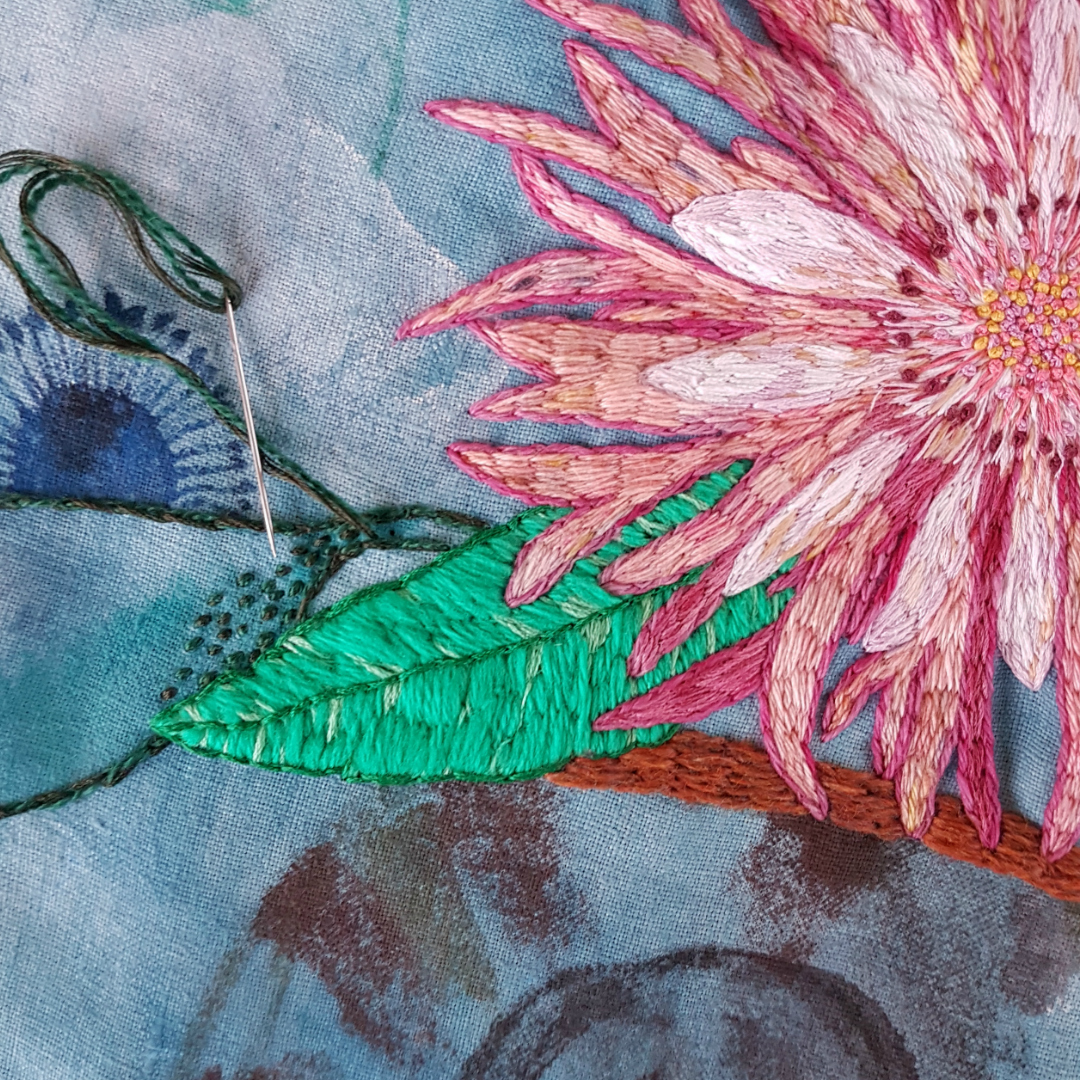
What inspires your mixed media embroidery?
My major inspiration is flora, the natural world is so precious and I love being able to tell stories about its beauty, diversity, and the incredible resilience it displays. I am so intrigued by the details of flowers and leaves, moss, and weeds it all just totally makes my heart sing. My soul is always so happy when I’m making art and when I’m in nature so combining the two gives me the ultimate heart top up.
How do you see the inspiration for your work growing and changing?
My inspiration grows and changes as I do. Currently, I’m totally obsessed with listening to podcasts like and Big Magic, there’s an evolution occurring in my right now that I feel is influenced by my personal spiritual journey and basically a whole lot of soul-searching.
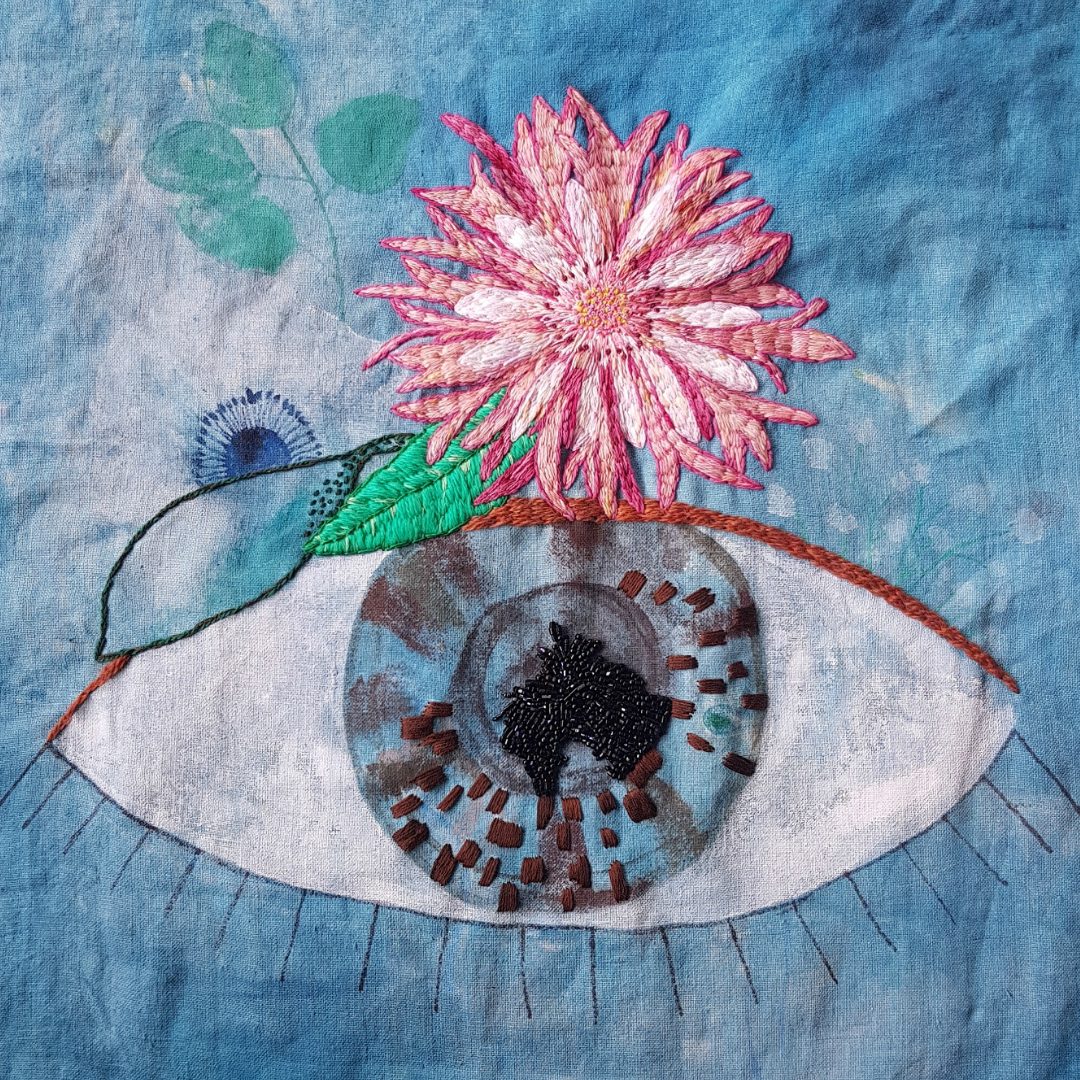
You say that you “come to stitch as a mixed media artist”. What lead you to embroidery?
I guess it probably subconsciously started when my Mum gave me my great grandmother’s hand-stitched tablecloth, green linen with white flowers all over, it has always been a treasure to me.
Found objects and collage have formed a big part of my art practice over the years and as an op-shop (thrift shop) addict, I would find old books and embroidered linens to collage into my work. As my practice became more intentional, I wanted all of the imagery to be elements that I had created. So I stopped using found stuff and created it all myself… stitch was the last bit that was missing from the equation.
The real tipping point was two things, a book called by Rosemary Mcleod which documents hand crafts of New Zealand women through the 1930s-50s. I was totally enchanted by their ability to create such beauty with so little. The other was when my framer (and friend) Gill asked if I had stitched an element of one of my collages, I regretfully said no and at that moment decided that I would teach myself.
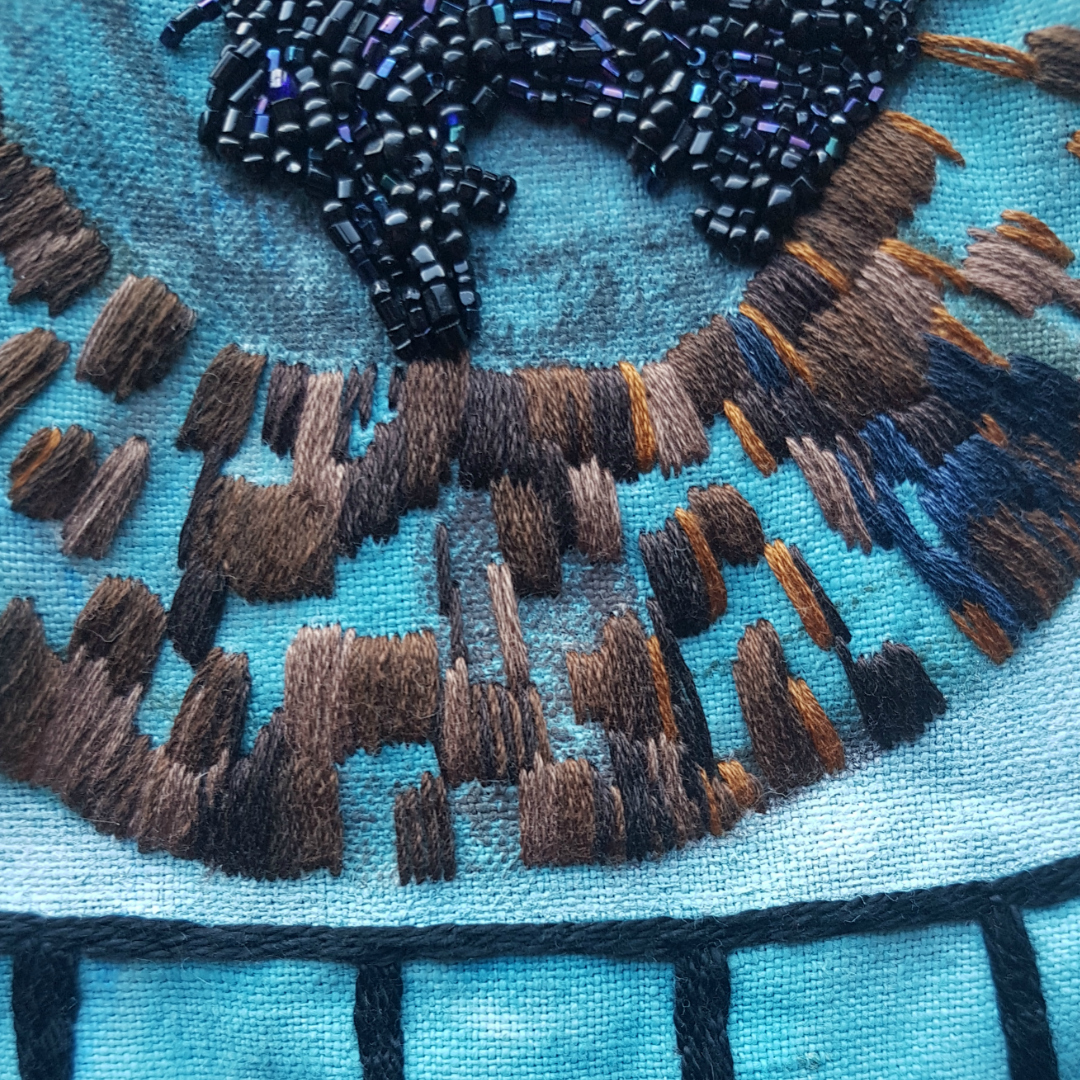
What are the techniques you use in your work? Where/how did you learn them?
90% of the techniques I use I have developed through play and experimentation in my studio. I paint, illustrate, collage, and stitch mostly. Initially I stitched into paper which was a major learning experience, then I started working into my heavily painted and collaged canvases which also posed some challenges… eventually, I found a happy marriage with acrylic paint, gouache, linen, and stitch.
Because I taught myself to stitch by examining the found embroideries hanging around my house, I have some random techniques that are not anywhere near to the guild standards but I love the freedom of making things up as I go and not getting too caught up in the technicalities.
Learning French knots while having a cup of tea with the embroidery guild ladies was completely life changing though as my self-taught method was pretty hilarious on reflection.
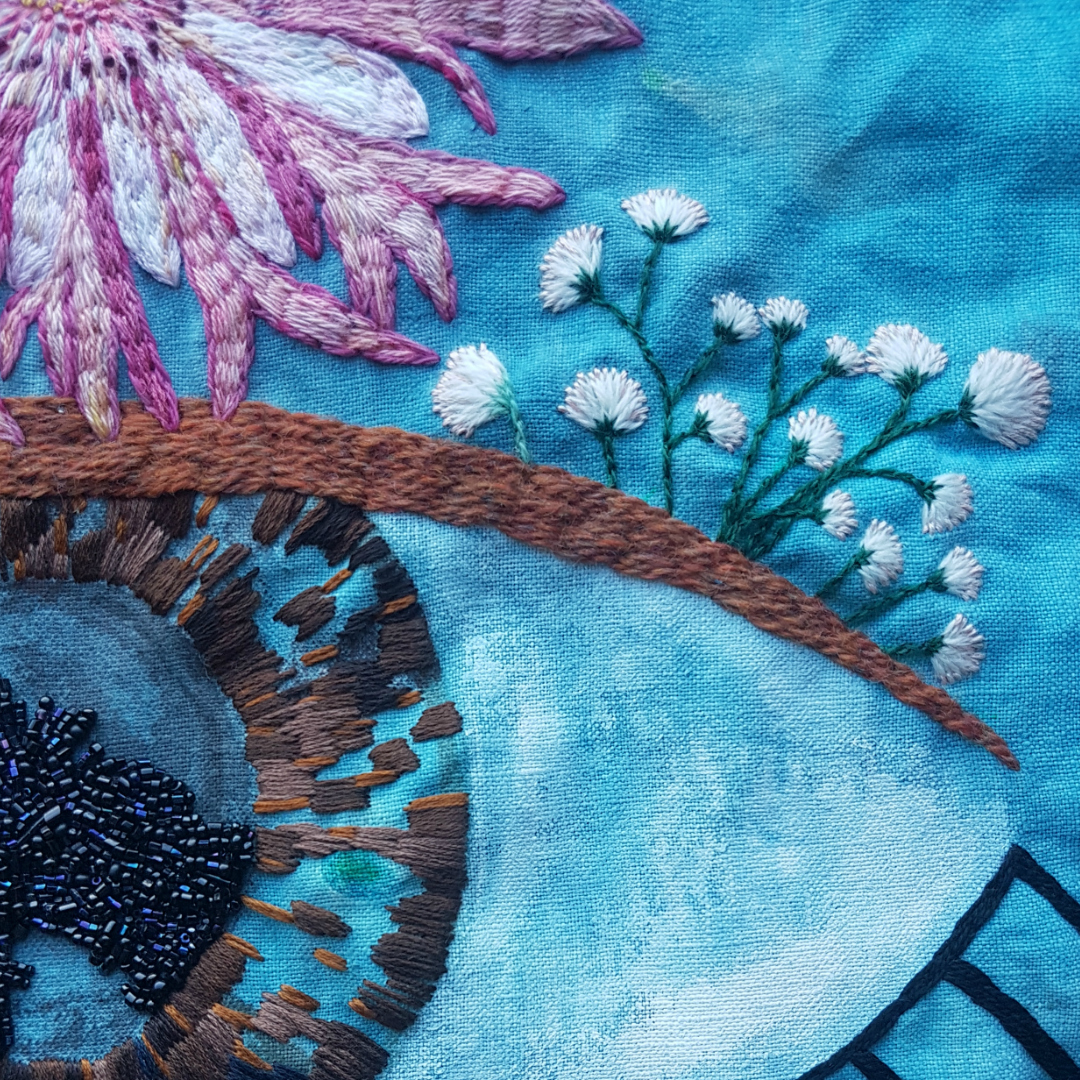
What are your favorite tools to use? Any that you can’t live without?
I can’t live without my plastic clip together square frame, because I work on large pieces of linen I love how I can move it around and how light and easy to hold it is. I rarely use round hoops.
Other materials include:
- Union Fibre hand dyed 4 ply silk-merino blend wools
- are my favs.
- The gentle art — simply shaker threads that are so beautifully hand dyed
- , the color range is just so good
When creating a new piece, what’s the first thing that you do?
First up, I drag big pieces of linen out to the lawn and paint them with lots of water, acrylic paint, and big brushes, it’s messy and wet and really fun. I leave the linen in big puddles of watery paint out in the sun to dry by evaporation which creates some beautiful watermarks. Then I usually get my favorite reference book, the Readers Digest Complete Book of the Garden and paint my imagery on by hand straight onto the now dry linen using the illustrations in the book or real plants as a guide.
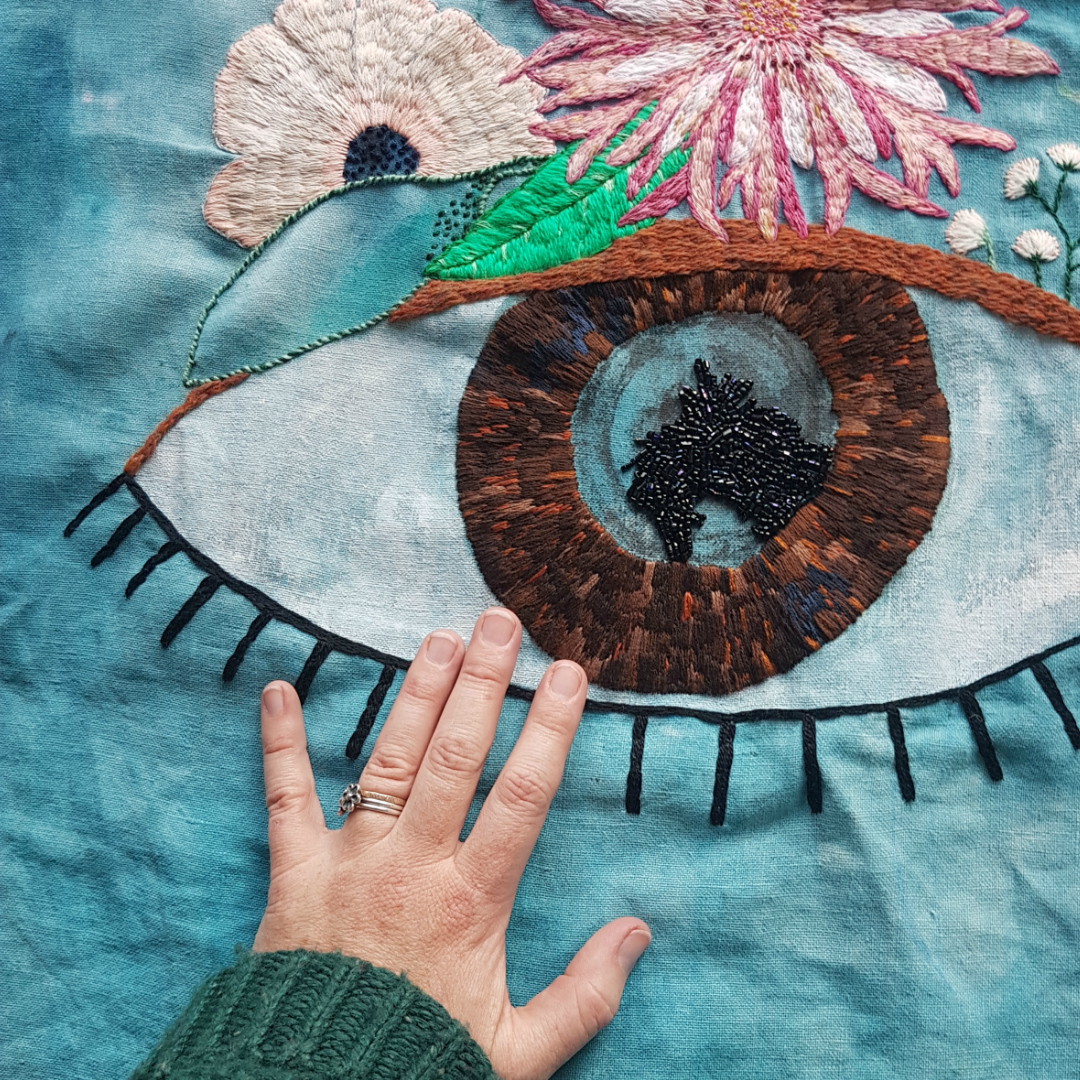
What’s the most challenging part of your artistic process?
Time! it takes sooooo long. I love the process so much so making the work isn’t a hardship but the time it takes means that I can’t always make enough to meet demand.
How do you overcome it?
I’ve just created a new process and collection of work that I hope will allow me to strike a great balance. [It] just launched over on .
For these pieces I have been making paper collages that I have digitally printed onto linen, I then add elements of paint, stitch, and gold leaf so that each piece is original and has it’s own energy but the process is weeks rather than months so I can make a few more to meet demand and still bring a great sense of joy to each work.
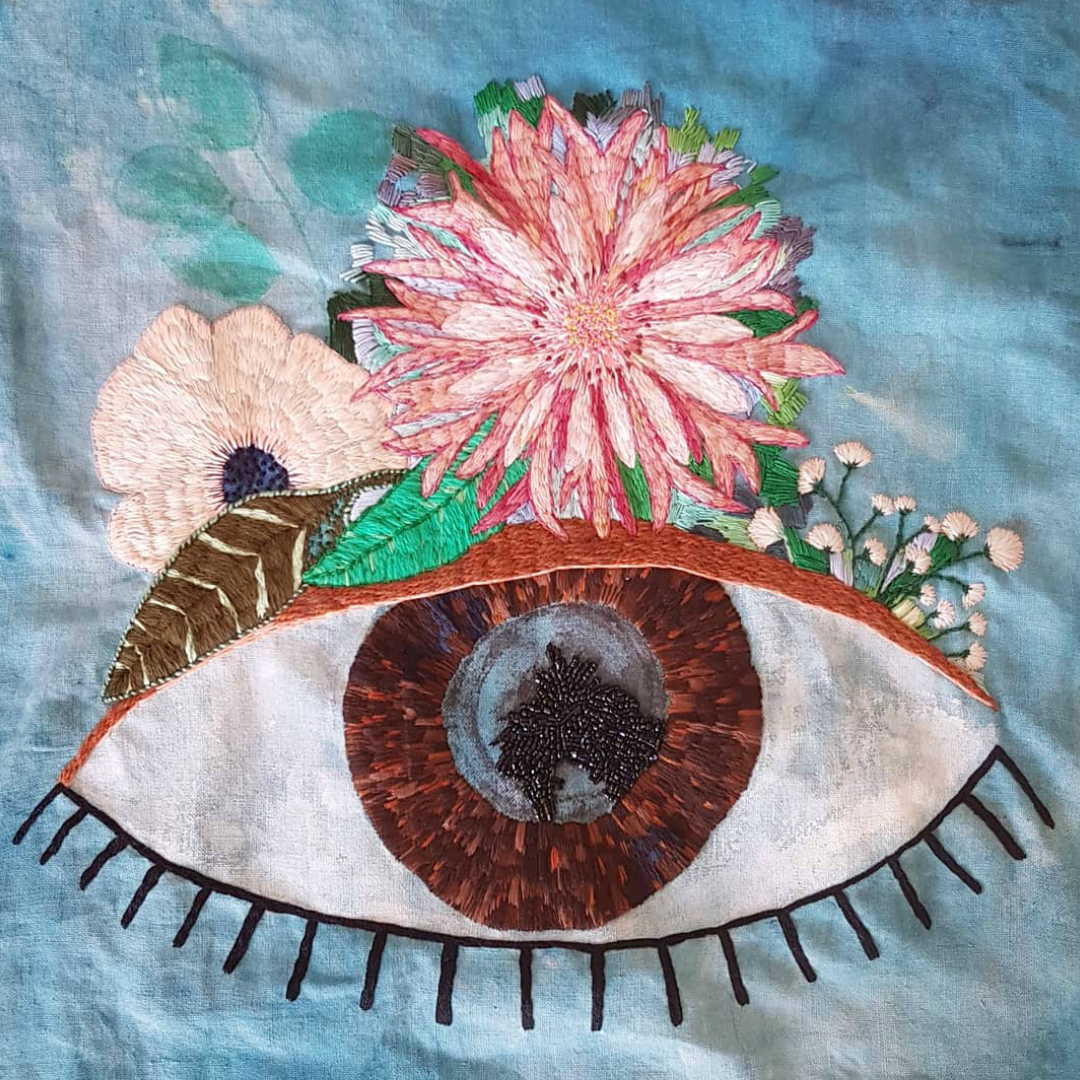
How long does it take for you to complete a piece?
Sooooo long often that I have stopped counting, I never really know when I begin how long a piece will take, detail is very important to me so I really cannot resist the urge to go back in and add more.
Generally, I work on three to five pieces at once so that I can keep switching between them which allows me to see each work with fresh eyes and helps me ‘see’ when a piece is done. I don’t usually have a complete plan when I begin, it’s a fairly organic process.
How do you know when it’s done?
Knowing something is finished for me is part visual assessment, looking at things like composition, detail, and color, asking have I told the story enough plus a big part is intuition and learning to let go.
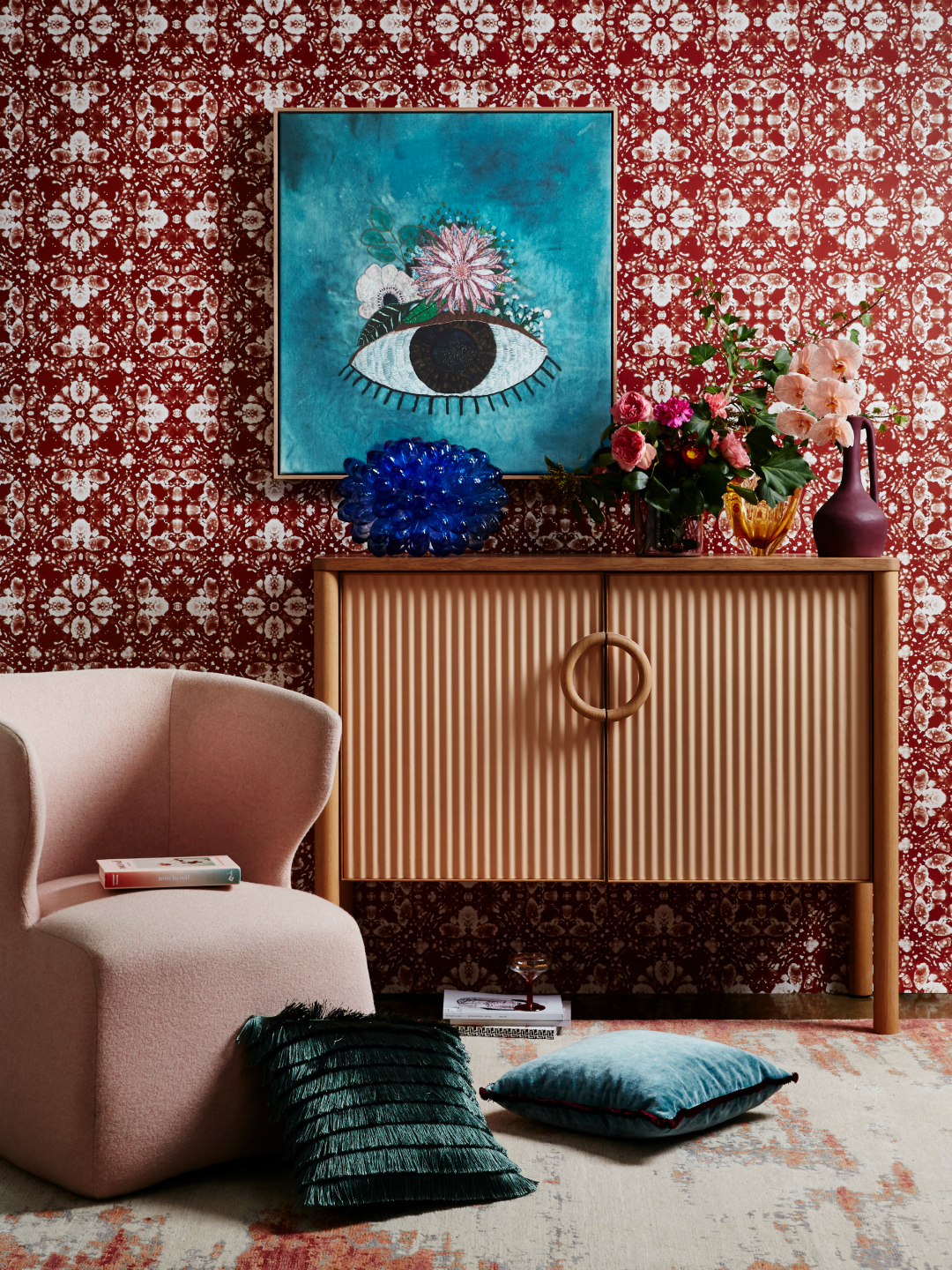
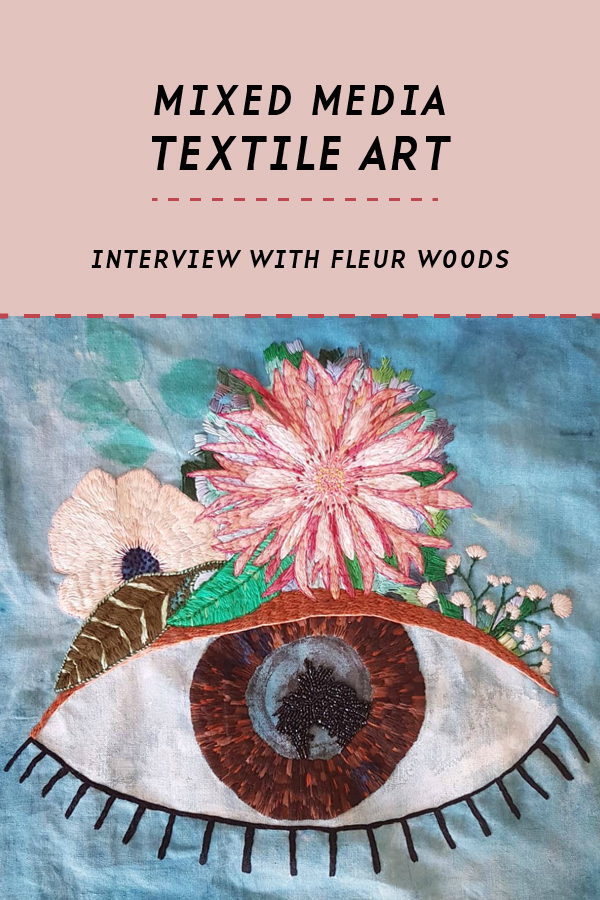
The post appeared first on .





























